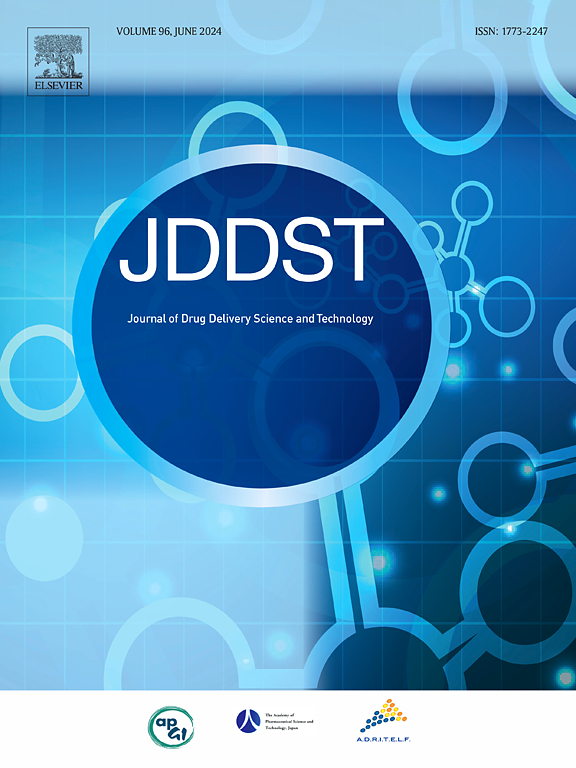Continuous-flow microfluidic process to produce amphotericin B-loaded polymeric nanoparticles for cutaneous leishmaniasis treatment
IF 4.5
3区 医学
Q1 PHARMACOLOGY & PHARMACY
Journal of Drug Delivery Science and Technology
Pub Date : 2025-04-01
DOI:10.1016/j.jddst.2025.106880
引用次数: 0
Abstract
High-flow rate 3D microfluidic devices enable controlled nanoparticles (NPs) formation, uniform size and scalable production. However, commercially available chips are expensive and difficult to manufacture. This study developed a low-cost microfluidic device using simple microfabrication techniques. NPs fabrication parameters were optimized to enhance specific characteristics such as particle size and polydispersity index (PDI). The optimized parameters to produce amphotericin B encapsulated NPs (NPs-AmB) included polymer concentration of 10 mg/mL, total flow rate (TFR) of 2000 μg/min, and flow rate ratio (FRR) of 0.225. NPs-AmB demonstrated particle size of 269.0 ± 1.0 nm and PDI of 0.138 ± 0.005. NPs-AmB showed reduced cytotoxicity to macrophages compared to free AmB and exhibited high selectivity towards Leishmania amazonensis promastigotes and amastigotes. The microfluidic device is promising to produce NPs, demonstrating scalability, in vitro safety, and promising anti-leishmanial activity for NPs-AmB.

求助全文
约1分钟内获得全文
求助全文
来源期刊
CiteScore
8.00
自引率
8.00%
发文量
879
审稿时长
94 days
期刊介绍:
The Journal of Drug Delivery Science and Technology is an international journal devoted to drug delivery and pharmaceutical technology. The journal covers all innovative aspects of all pharmaceutical dosage forms and the most advanced research on controlled release, bioavailability and drug absorption, nanomedicines, gene delivery, tissue engineering, etc. Hot topics, related to manufacturing processes and quality control, are also welcomed.

 求助内容:
求助内容: 应助结果提醒方式:
应助结果提醒方式:


